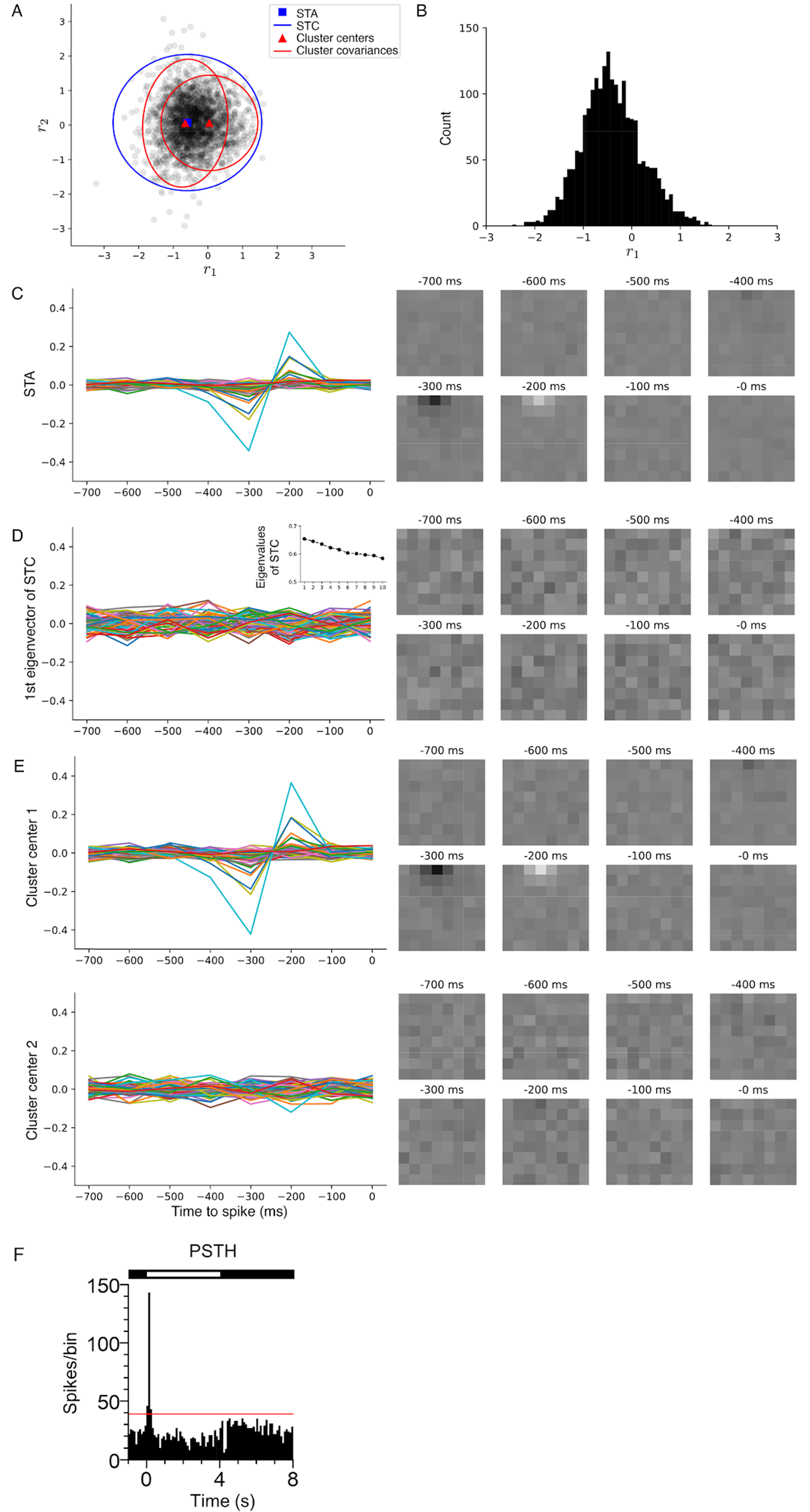
Fig. 3. STA, STC, and STCL comparison: ON RGC. (A) Scatterplot of dimension-reduced spike-triggered stimuli (dots), whose center is marked by the STA (blue square), with STC as the ellipse in blue. Using STCL, spike-triggered stimuli are clustered into two groups. One of the group centers (shown as red triangles) is closer to the STA with a smaller covariance (red ellipse in A) than the STC. (B) Shown are histogram of projections to the first eigenvector (v1), which is unimodally distributed. (C) Temporal (left) and spatial (right) STA profiles clearly show the RGC’s ON response. The STC’s 10 largest eigenvalues are shown in (D), left column, inset, with no significantly large eigenvalues. As a result, the temporal (D, left) and spatial (D, right) profiles of the first STC eigenvector do not show any noticeable peak. Each row (E) shows the temporal (left) and spatial (right) profiles of a cluster center identified by STCL. The first cluster center (top) is similar to the STA, while the other (bottom) contains noise. (F) Shown are post-stimulus time histogram (PSTH) graphs of RGC response to full-field illumination of 4 s ON and 4 s OFF duration (time bin: 100 ms). The red horizontal line inside the PSTH graph indicates one-sided 95% confidence interval.
© Exp Neurobiol


